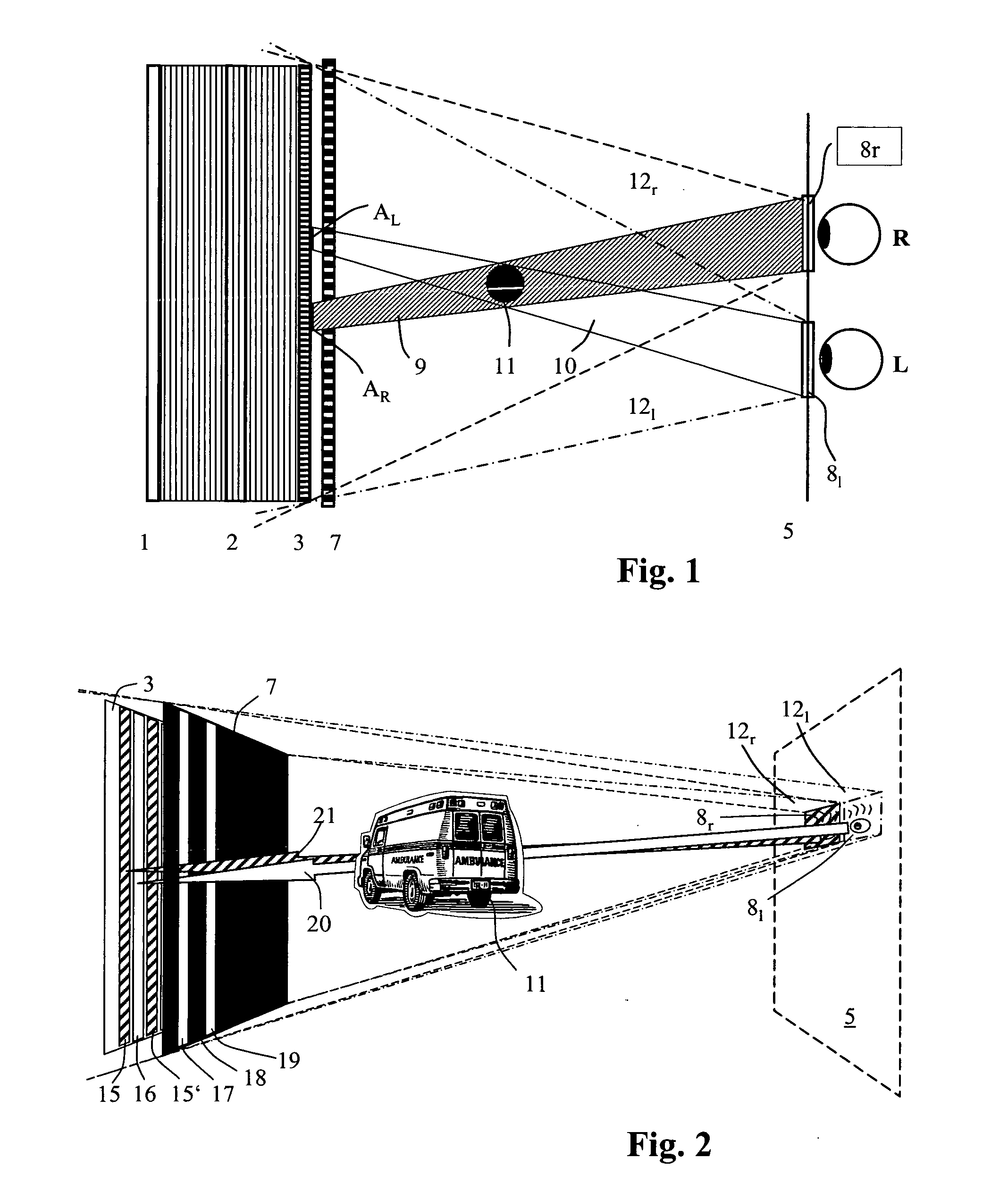Method and device for encoding and reconstructing computer-generated video holograms
a computer-generated, large-area technology, applied in the direction of holographic light sources/light beam properties, holographic processes, instruments, etc., can solve the problems of arbitrary depth, display surface, and 3d-autostereoscopic displays using conventional optics, and achieve the effect of substantially low refresh ra
- Summary
- Abstract
- Description
- Claims
- Application Information
AI Technical Summary
Benefits of technology
Problems solved by technology
Method used
Image
Examples
Embodiment Construction
[0045] During the course of this description, like numbers will be used to identify like elements according to the different views that illustrate the invention.
[0046] In the preferred embodiment of the invention, the information about a three-dimensional scene is encoded in a transmissive holographic array, where the pixels are computer controlled according to the encoding to form a pixel pattern. However, the basic idea of the invention is not limited to the described transmissive holographic array. Both transflective and reflective holographic arrays or arrays that directly modulate the phase of the light waves, such as Freedericksz cells, may be used.
[0047]FIG. 1 shows a line light source 1 that illuminates, via focusing means 2, a holographic array 3. The focusing means 2 is a horizontally disposed cylindrical lens that images the light of the line light source 1 into a viewing plane 5 containing viewing windows 8r, 8l.
[0048]FIG. 1 relates to a holographic encoding of a sing...
PUM
 Login to View More
Login to View More Abstract
Description
Claims
Application Information
 Login to View More
Login to View More - R&D
- Intellectual Property
- Life Sciences
- Materials
- Tech Scout
- Unparalleled Data Quality
- Higher Quality Content
- 60% Fewer Hallucinations
Browse by: Latest US Patents, China's latest patents, Technical Efficacy Thesaurus, Application Domain, Technology Topic, Popular Technical Reports.
© 2025 PatSnap. All rights reserved.Legal|Privacy policy|Modern Slavery Act Transparency Statement|Sitemap|About US| Contact US: help@patsnap.com



